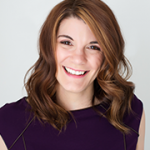Imagine, for a moment, being faced with these challenges and tasks while taking over the CIO role for a large government agency:
- You’ve inherited several legacy systems and many more business processes.
- You want to inspire your IT team to overhaul the aging systems, and you want to inspire the different programmatic bureaus and offices to simplify processes.
- You know a lot of history has preceded your arrival, and that it will be important to listen and learn while also working to encourage a “think different” mindset about the agency’s technology.
- You want everyone to know you’re open to thinking outside the box, while at the same time encouraging them to do the same.
Faced with these challenges, what would you say? How would you get your message across?
Dr. David A. Bray found himself in this position 18 months ago, when he took over the CIO role for the U.S. Federal Communications Commission. In the eight years prior to his arrival, there had been nine CIOs, either in a permanent or acting capacity. There had been sporadic efforts at change in the past that had not lasted. Staff morale was not at its highest.
Bray knew that in order to be successful, he was going to need to be more than a champion of change. He was going to have to cultivate a network of change agents. That’s what he’s done, and so far it’s working.
Bray’s efforts to encourage employees to be open to change and experimentation has attracted new talent to work alongside the existing IT staff at FCC. And he has engaged the different bureaus and offices across the Commission at a time when the FCC was under intense pressure to upgrade its aging legacy systems. Here’s how Bray has been driving the cultural change as CIO of the FCC:
“When I showed up at the FCC, one of the first talks I gave to both the IT team and the broader FCC as a whole was about the need for experimentation. I explained that ‘expertise’ and ‘experiment’ have the same root, meaning ‘out of danger.’ This is critical, because in order to gain expertise and keep up with the changes in our world, we’re going to have to conduct experiments. Experiments by their nature are dangerous – they’re risky, not every experiment will work – yet in a rapidly changing world, that’s the only way for us to adapt and learn. So it’s important to create a space in which it’s okay to experiment and learn how to adapt,” Bray said.
How Employees Reacted
To get employees comfortable with doing more experiments, Bray told employees he was creating a safe space where they could feel comfortable bringing their ideas forward. The initial reaction was mixed.
“At first, I would say maybe about 10 to 15 percent got it,” Bray said. “Another 40 percent were on the fence, with a neutral mindset of: ‘That sounds nice, but we don’t know if we see ourselves as being that proactive about change.’ And then another 40 percent raised contrarian concerns akin to ‘Well, wait. If we take risks and fail, will that hurt our careers? Why should we do anything more than the status quo? We don’t want to jeopardize our jobs.’ That said, I expected that initially my proposal would be met with skepticism – it’s healthy to a degree. There are times when some executives say they want change, yet really don’t want to support risk takers. I needed to show the team I meant what I said. Actions speak louder than words.
“So I worked with 10 or 15 percent of early adopters initially through lunches or after-work happy hours, and the coalition of the willing grew to more like 35 to 40 percent. Even now, the network of positive ‘change agents’ isn’t the majority yet, and I don’t know if it will ever become the majority, but that’s okay. It’s now grown as large, if not larger, than the skeptics. And that’s a good sign that the transformation movement has reached a tipping point.
Skeptics welcomed
“You always want skeptics in some respects,” Bray continued. “Today’s reality is that modern IT organizations have to do two things: One, they have to keep the lights on and keep the status quo running smoothly. So you need people who are attracted to that consistent, repeatable work. Two, modern organizations need to do the complete opposite, namely dramatically adapt to the exponential changes in our globalized world. To do that, you often need to attract a totally different personality than those who like to keep the trains running. A goal of a good CIO, and good executive in general, should be to recognize and reward both types of people – as a real-time evolving organization needs both.”
The way Bray sees it, if CIOs really want to be successful they need to develop a network of change agents not only within the IT shop, but across the organization as a whole.
“Your organizational partners may have a diversity of views and differ on where things need to go, and that’s actually okay. Diversity leads to better outcomes and avoids the risks of group think. Our rapidly changing world requires a diversity of perspectives on both the changing organizational and global technology landscapes.”
ALSO READ
- Major Overhaul: How the FCC CIO plans to modernize 207 legacy IT systems
- To become a CIO, you may have to change perceptions of the IT department
Dr. David A. Bray serves as Chief Information Officer (CIO) for the Federal Communications Commission, overseeing the Commission's efforts to modernize legacy systems and transform technology partnerships in telecommunications, broadband, competition, the spectrum, the media, public safety, and security. He was selected to serve as a member of the Council on Foreign Relations and as a Visiting Associate for the Cybersecurity Working Group on Culture at the University of Oxford in 2014.




